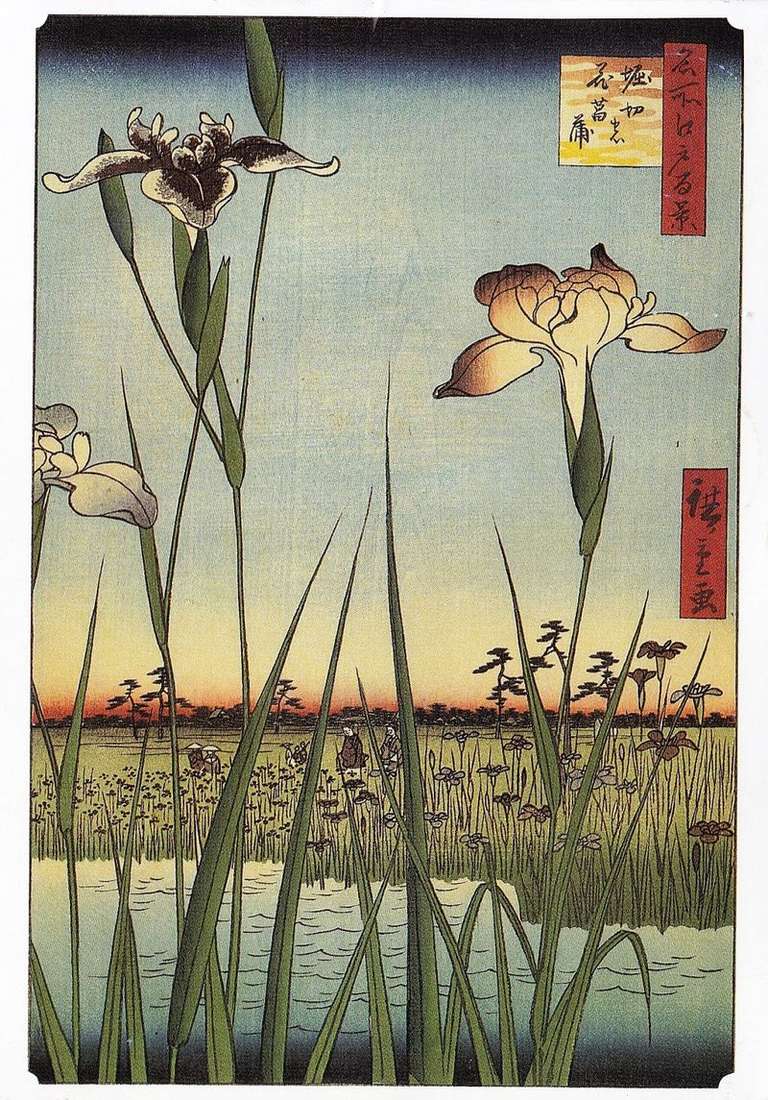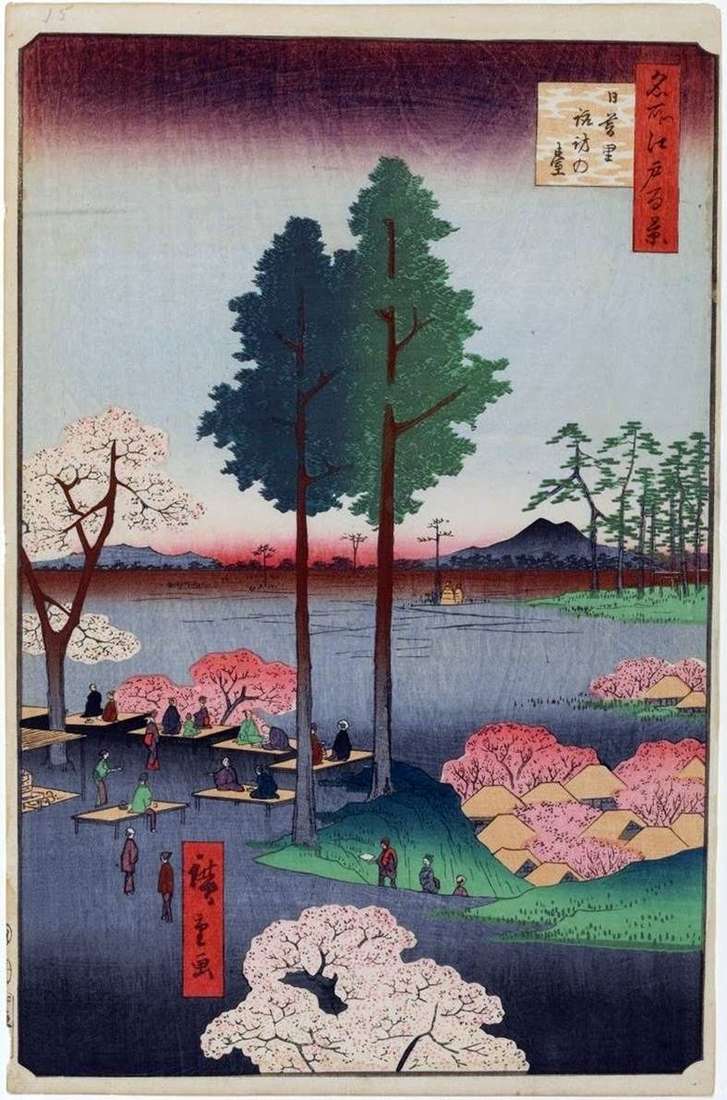
The village of Minova was located south of the Senju station along the Osyukaydo tract and was formerly called Haradzyukuta. Before the construction of the Shanjiu Ohashi Bridge, there was a road station where travelers spent the night when the river level rose and they could not wade it. In the west were the villages of Kanasugi and Mikawashima. In the background, the engraving shows the territory of Mikawashima.
Since ancient times, these were agricultural villages, they were in the lowland to the south of the Arakawa River. Here rice and daikon radish were grown. During the floods, the fields were flooded and became an ideal place for the shogun falconry hunting for the cranes of the tant, which are depicted by the artist in the foreground of the engraving. Every year, from the end of November to February, cranes from the continent arrived to these places. But they hunted them only in the winter, in the autumn they were guarded from dogs and fed.
It is known that Tokugawa Ieyasu was very fond of hawking. In Mikawajima, the eighth shogun Yoshimune, the eleventh shogun Ienari, and the twelfth shogun Iesi often came to hunt. In the early series, the color of the oxen in the foreground was blue with dark blue shadows along the edges. The rice fields in the background were painted blue-green, and the sunset strip was not as bright as in the late leaf.
 The villages of Minova, Kanasugi and Mikavasima by Hiroshige Ando
The villages of Minova, Kanasugi and Mikavasima by Hiroshige Ando Les villages de Mikavashima, Kanasugi et Minova
Les villages de Mikavashima, Kanasugi et Minova The Ohashi Bridge in Senju by Utagawa Hiroshige
The Ohashi Bridge in Senju by Utagawa Hiroshige Villages de Minova, Kanasugi et Mikavashima – Hiroshige Ando
Villages de Minova, Kanasugi et Mikavashima – Hiroshige Ando Irises in Horikiri by Utagawa Hiroshige
Irises in Horikiri by Utagawa Hiroshige The elevation of Suwanolai in Nippori by Utagawa Hiroshige
The elevation of Suwanolai in Nippori by Utagawa Hiroshige Sakasai crossing by Utagawa Hiroshige
Sakasai crossing by Utagawa Hiroshige Embankment Koumae by Utagawa Hiroshige
Embankment Koumae by Utagawa Hiroshige